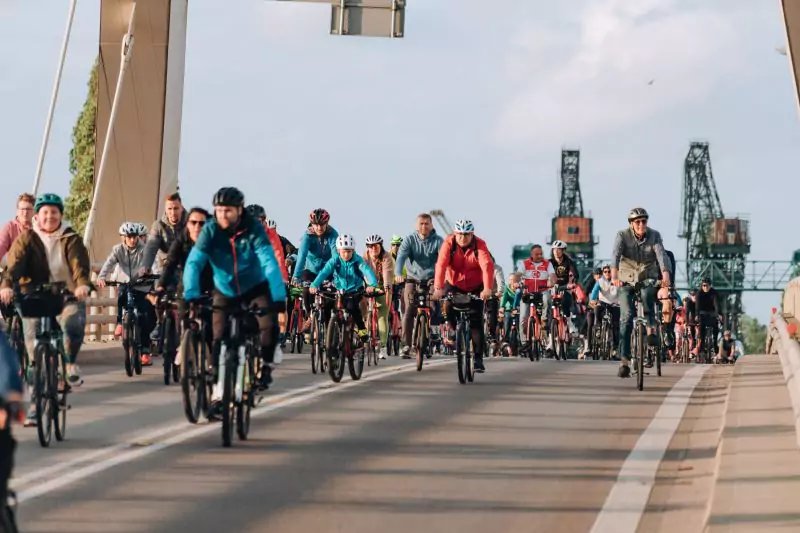
At the prestigious Velo-city congress in Gdańsk, the European Cyclists’ Federation (ECF) honored the Berdychów Bridges project in Poznań—delivered by Budimex SA—with an award in the Cycling Infrastructure category. The accolade recognizes Europe’s most innovative bicycle transport solutions.
The Berdychów Bridges link the left bank of the Warta River and Poznań’s Old Market Square with the right bank and Malta Lake. Since their commissioning in February 2025, the bridges have become a symbol of sustainable urban design—blending aesthetics, advanced engineering, and environmental awareness. Spanning 165 meters over the Warta and 117 meters over the Cybina River, the infrastructure quickly gained popularity: over 50,000 bicycle rides were recorded in the first month alone, with nearly 220,000 rides to date—making it one of the most-used cycling routes in Poznań.
The steel bridges, built without intermediate supports, incorporate cutting-edge technologies, including sealed structural chambers filled with nitrogen to prevent internal corrosion. Nearly 2,400 tonnes of steel were used, with installation supported by a 1,200-tonne capacity mobile crane—one of the largest of its kind. Budimex also carried out comprehensive development of the surrounding area, adding pedestrian walkways, cyclist and accessibility ramps, urban greenery, small architectural elements, and LED lighting integrated into glass railings to enhance safety at night.
“This award is more than just recognition—it’s evidence that investments in sustainable mobility and high-quality public spaces truly enhance urban life and are valued internationally,” said Marcin Zaorski, Contract Director at Budimex SA. “The Berdychów Bridges not only connect key parts of the city, but also serve as a benchmark for how cycling infrastructure can elevate urban living.”
Budimex SA continues to contribute to active mobility across Poland. In June 2024, the company completed a pedestrian and bicycle bridge over the Vistula River in Warsaw. Like its Poznań counterpart, the Warsaw crossing stands out for its user-focused design and modern architecture that harmonizes with the riverside landscape—strengthening the city’s commitment to sustainable and inclusive infrastructure.




